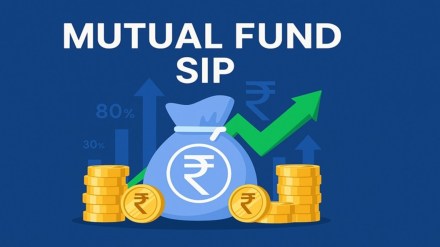Most investors start a SIP (systematic investment plan) with discipline, enthusiasm, and big dreams — like building a corpus of Rs 1 crore in 20 years. Things go well for the first few years. Monthly SIPs continue and they feel they’re moving in the right direction.
But even after investing with discipline for 10 or 15 years, the moment markets fall, a job or income shift happens, or a sudden expense comes up, many investors pause their SIPs right when the final, most powerful wealth-creation years are about to begin.
As we know, compounding feels slow in the early years. The real magic shows up only in the final phase of your investment journey. For the first 5–10 years, investments grow slowly because the base is small.
A simple way to understand compounding is this:
For the first 10 years, you are giving time to compounding. For the next 10 years, compounding starts giving back to you. By year 15, your investment becomes so large that the yearly return itself matches or even exceeds your annual SIP. This is the stage where money starts earning money on its own—and it accelerates fast.
That’s why real wealth is created in the last 5–6 years of a long SIP, not at the beginning.
Now see how big this difference actually is.
Suppose an investor is making a SIP of Rs 10,000 every month. The objective is a long-term investment of 20 years.
Let’s assume a 12% CAGR return.
If the SIP continues for the full 20 years:
Investment: Rs 24 lakh
Total profit: Rs 76 lakh
Final corpus: Rs 1 crore
This Rs 1 crore doesn’t build up gradually — the biggest part of it is built up in the final 5–6 years, when compounding is faster.
Now consider if the SIP is stopped after 15 years:
Investment: Rs 18 lakh
Profit: Rs 32.45 lakh
Final corpus: Rs 50 lakh
Outright loss (assuming SIP stopped at 15 years): Rs 50 lakh.
The market didn’t cause this loss. This loss was caused by the investor himself, because he didn’t stay invested in the final years, when compounding was making the most money.
Why is there such a huge corpus gap?
- Profits in the final years exceed your SIP.
Whereas you invest Rs 1.2 lakh annually, after 15–20 years, the portfolio starts generating returns of Rs 1.5–2 lakh annually.
- Compounding becomes exponential.
After 10–12 years, the graph no longer grows like a staircase—it takes on a steep upward curve.
- Wealth is small in the first decade, multiplied by the second.
This is the period when wealth is created so rapidly each year that the corpus appears to double in just a few years.
Therefore, stopping SIPs in the 15th year means missing out on rapid growth.
Why do people abandon SIPs?
Investing isn’t just a game of numbers; it’s also driven by emotions.
People often stop their SIPs when the market is falling, when there’s a job change or income uncertainty, when an unexpected expense hits, or when fear created by news and social media takes over. In every one of these moments, the decision to stop is emotional, not financial.
But the impact is purely mathematical—a calculator shows how costly skipping the final years can be.
SIPs are not a mathematical exercise—they are a habit.
The secret to successful SIPs is not just the investment amount, but discipline and regularity. Just as gradual learning builds a career, slowly investing builds wealth. Once investments stop, so does the full potential of compounding — but this often happens at the time when it needs to accelerate most rapidly.
Caution to SIP investors
The power of SIPs lies not in the amount you invest, but in the duration of your investment. Stopping just 5 years early eliminates half of your dream corpus.
Closing takeaway: Last 5 years = 50% of your wealth
If you’ve set a 20-year goal, consider the last 5–6 years non-negotiable. Missing these is the mistake that limits the potential of crores to lakhs. Remember, you become a millionaire at the end, not the beginning. And that’s the end most investors don’t see.
Disclaimer: The above content is for informational purposes only. Mutual Fund investments are subject to market risks. Please consult your financial advisor before investing.
